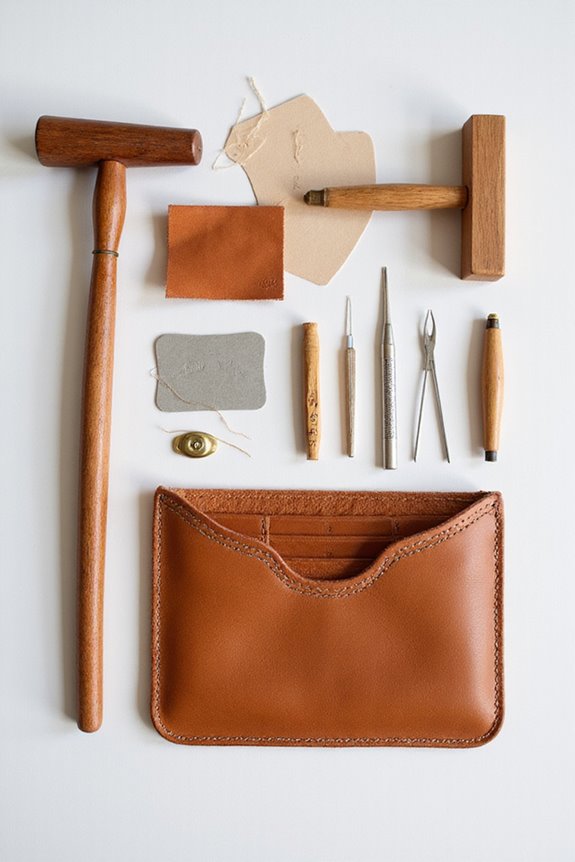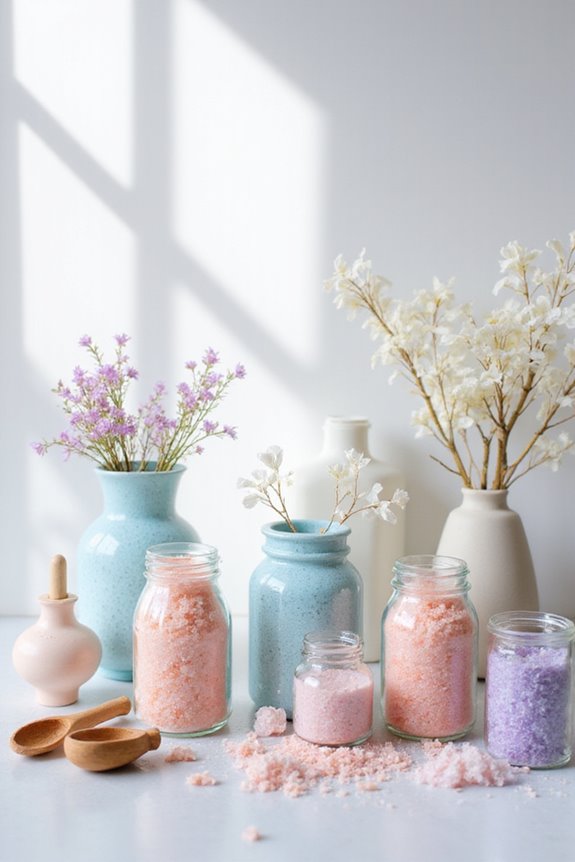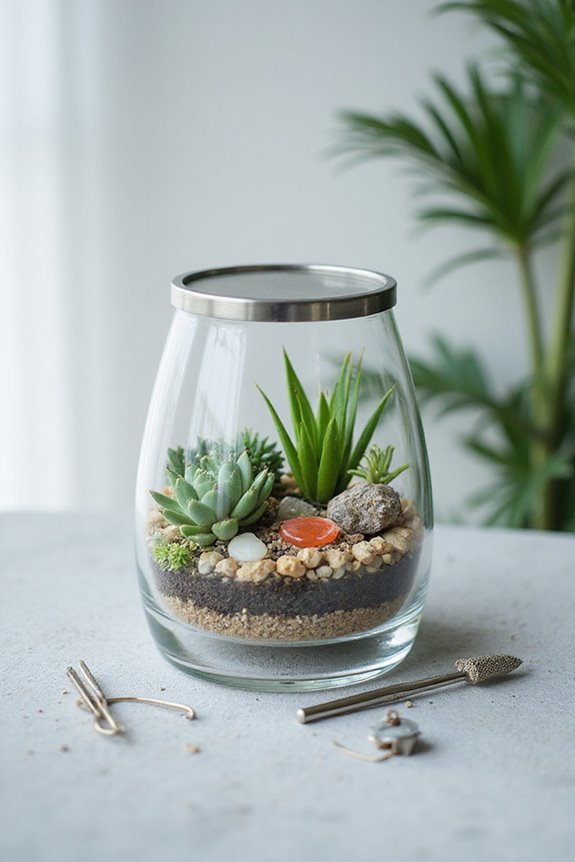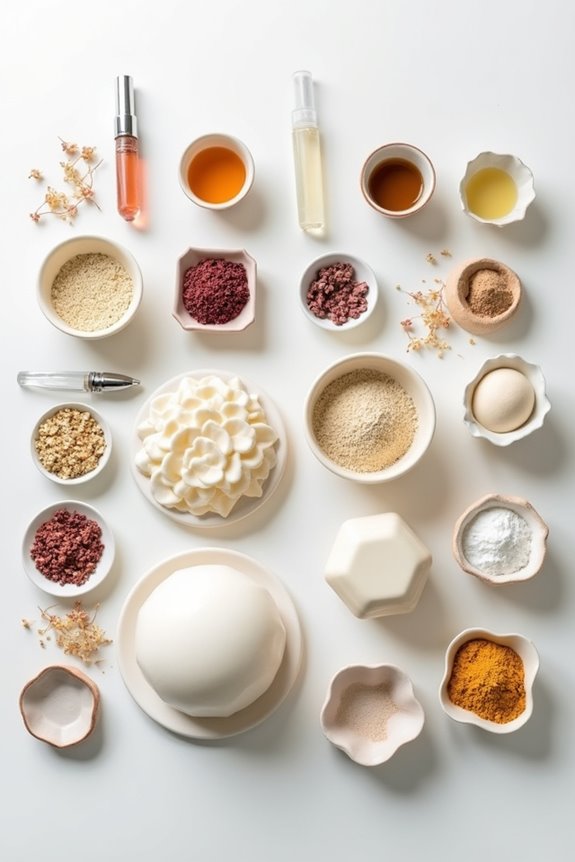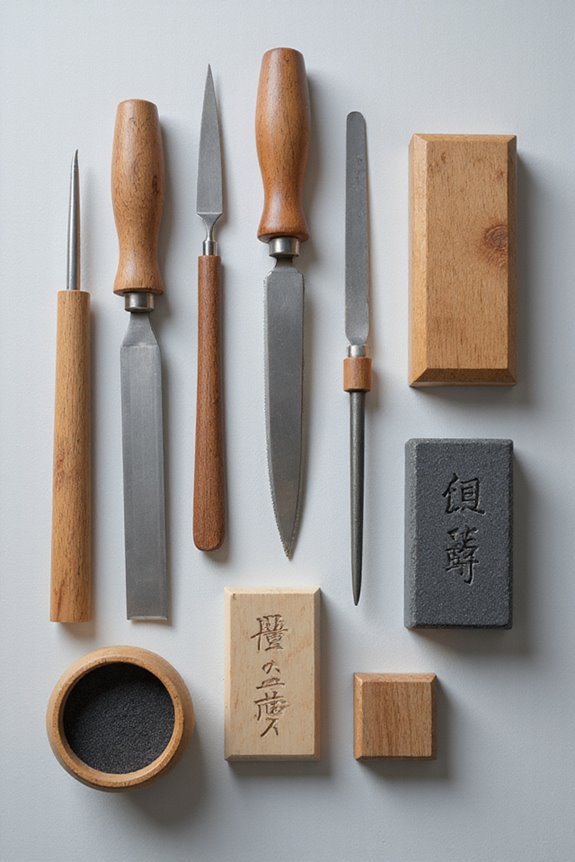Korean leather craft kits combine high-quality materials, innovative tools, and cultural design, catering to various skill levels from beginners to advanced artisans. They often include pre-cut vegetable-tanned leather, durable stitching threads, and essential tools like edge bevelers and stamping sets, enhancing the crafting experience. With kits ranging from simple assembly to advanced techniques like dyeing, users can gradually build their skills. As we explore further, we’ll uncover more about their cultural significance and market trends.
Key Takeaways
- Korean leather craft kits emphasize high-quality materials, featuring vegetable-tanned leather and durable threads for various skill levels.
- They offer a range of themed projects, from beginner assembly to advanced techniques like edge beveling and dyeing.
- Each kit includes essential tools, such as skiving knives, harness needles, and customizable stamping sets for a personalized crafting experience.
- Instructional booklets and online tutorials support users, helping them overcome initial challenges in leather crafting.
- These kits reflect Korea’s artisanal heritage, blending traditional techniques with modern aesthetics for creative self-expression.
Overview of Korean Leather Craft Kits
Korean leather craft kits represent a notable segment within the broader leather crafting market, despite their limited visibility in promotional materials. We’re drawn to Korean craftsmanship, which emphasizes high-quality materials and innovative tools, like those from the well-regarded brand Doldokki. This company has been redefining tool designs since 2007, creating items such as sharp, durable skiving knives that benefit crafters of all skill levels. Although specific craft kits may not frequently appear in searches, the essential tools and materials they include are widely recognized for their effectiveness and modern design. Additionally, the aesthetic appeal of these tools meets both practical and visual needs, ensuring they are sought after by leatherworkers globally.
Types of Kits and Skill Levels
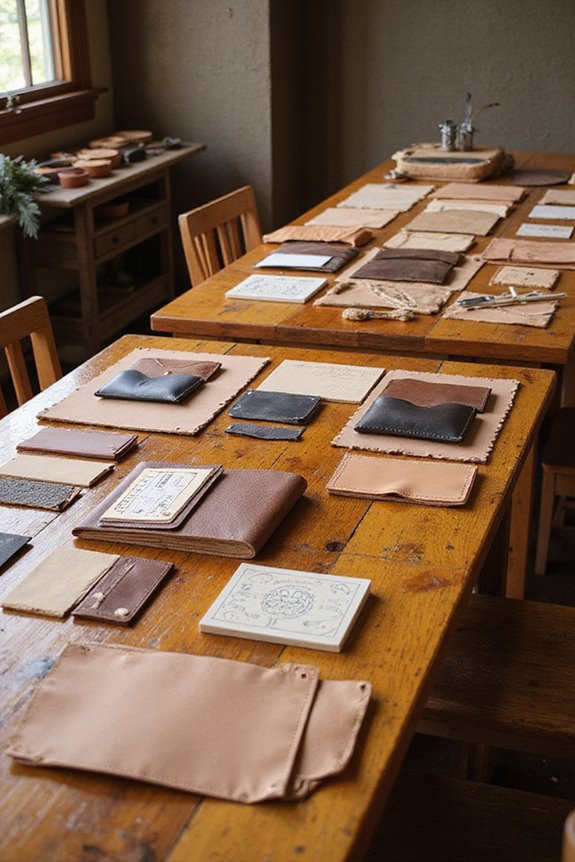
When exploring the landscape of leather craft kits, it’s important to recognize the diversity available based on project complexity and intended skill levels. Beginners might choose kits that focus on simple assembly, lacing, and basic knot tying, while intermediate kits introduce hand-sewing and hardware skills. Advanced kits challenge us with detailed techniques like edge beveling and dyeing. For those at the expert level, kits require advanced hand or machine sewing without pre-punched holes, employing complex crafting techniques such as skiving and wet molding. Additionally, themed kits offer specific items, catering to different interests at various skill levels. Ultimately, these kits allow for skill progression, ensuring all crafters can find suitable projects to enhance their abilities.
Contents and Features of the Kits
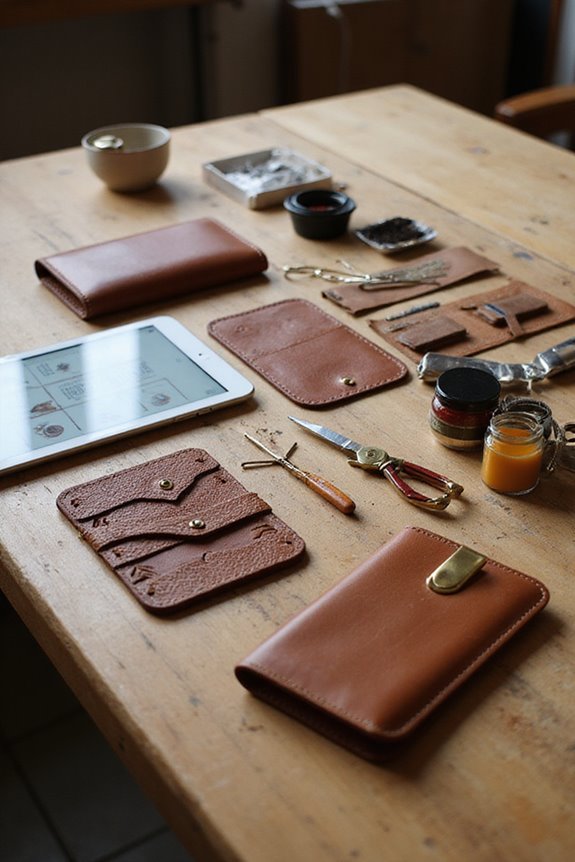
Leather craft kits offer a variety of components that cater to different project types, guaranteeing crafters have everything they need to successfully complete their work. Typically, these kits include high-quality vegetable-tanned leather pieces, pre-cut for specific projects, along with durable Japanese bonded nylon or waxed threads. For stitching, harness needles are provided, ensuring precise hand-stitching. Crafting tools, such as stamping sets with over 20 patterns and edge bevelers, allow for customization and professional finishes. Additionally, a cutting mat protects surfaces during work. Auxiliary items like instruction booklets or QR codes linking to tutorials help beginners. Overall, these kit components guarantee each crafter can find tools and materials suited to their creative endeavors.
Target Users and Learning Curve
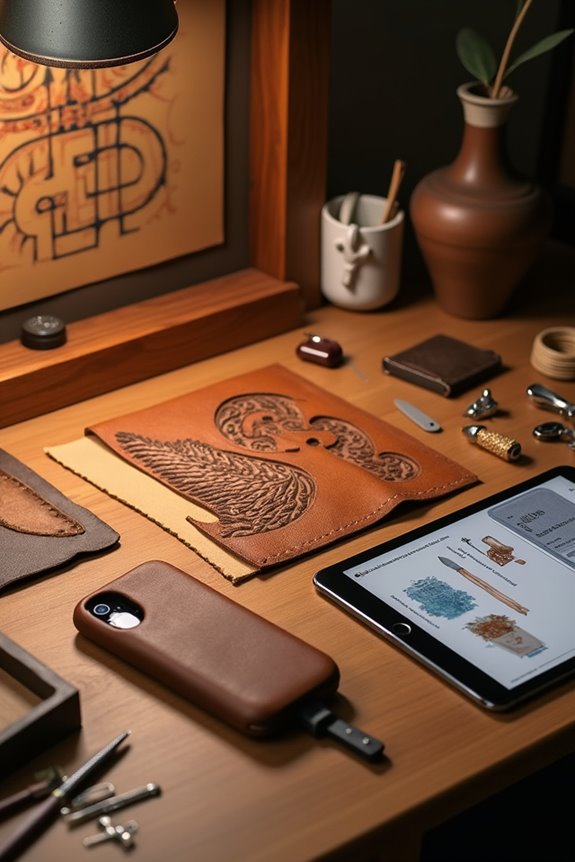
Anyone interested in leather crafting will find that these kits cater to a wide range of users, from children to seasoned professionals. As we explore these options, we see that beginner challenges, such as mastering leather’s stiffness and precise cutting techniques, can be significant. However, with regular practice and patience, users can navigate these hurdles effectively. Online tutorials and crafting communities enhance user engagement, providing invaluable guidance and fostering connections among crafters. As we progress from simple projects like keychains to more complex items like bags, users experience a satisfying growth in skills. This supportive environment encourages both beginners and experienced artisans to create, innovate, and refine their craft through shared knowledge and feedback.
Cultural Significance and Market Context
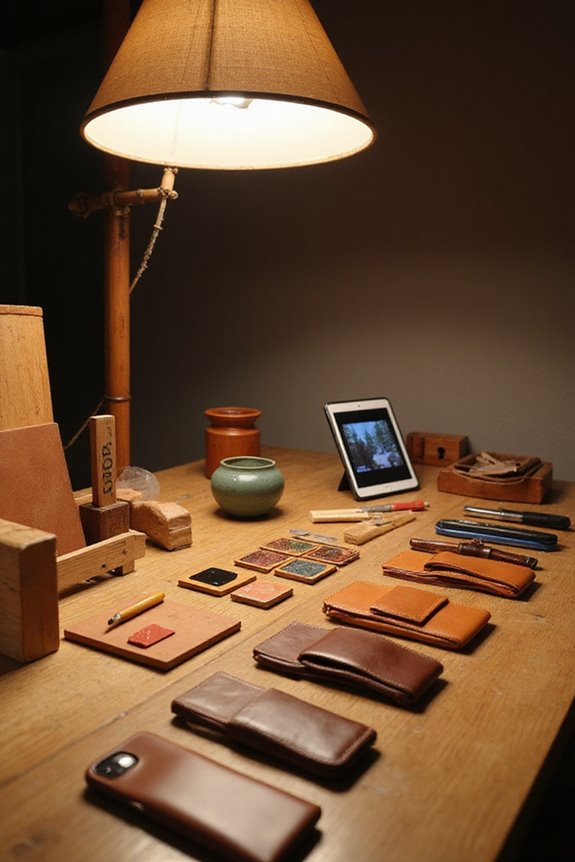
As the appreciation for artisanal crafts grows worldwide, Korean leather craft kits reflect a rich cultural heritage that blends traditional techniques with modern aesthetics. These kits are products of historical influences from neighboring countries, showcasing significant cultural exchanges. Within Korea, leather crafting emphasizes artisanal heritage, where skilled craftsmanship meets personal expression. By merging traditional and contemporary designs, these kits invite creativity while fostering community engagement through workshops. The demand for unique, handmade items underscores the rising interest in DIY culture, further establishing these kits in the market. Local providers face competition from international brands, but emphasize the quality and cultural uniqueness of their products, contributing to a vibrant and evolving economic landscape in Korea’s leather crafting industry.
Advantages and Limitations of Using Kits
When we explore Korean leather craft kits, it becomes clear that they offer unique advantages and certain limitations that can influence our crafting experience. One key advantage is the convenience of having pre-cut leather and all necessary materials included, which saves us time. Additionally, these kits often provide extensive tutorials, making them beginner-friendly and fostering creativity. However, limitations do exist. The choice of materials can be limited, restricting our ability to experiment with different types of leather. Furthermore, the quality can vary, impacting the final product. While engaging with crafting communities can enhance our skills and connect us with others, there’s still a dependency on the kit contents that may not accommodate every project we envision.
Frequently Asked Questions
Where Can I Buy Korean Leather Craft Kits?
When we’re looking to buy Korean leather craft kits, we’ve found a mix of online retailers and local stores. Exploring platforms like Etsy or specialty craft shops can lead to great finds for our projects!
How Long Does It Take to Complete a Kit?
Completing a leather craft kit can feel like unwrapping a gift; our completion time really depends on project complexity. Simpler designs might take hours, while intricate ones could stretch over several days, especially for beginners.
Can Kids Use These Kits Safely?
Kids can use these kits safely if we follow age recommendations and adhere to safety precautions. It’s essential we supervise young ones and guarantee all materials meet safety standards to protect our children.
Are Custom Orders Available for Korean Leather Craft Kits?
While the dream of bespoke designs and limitless customization options sings sweetly in our hearts, we’re finding that custom orders for Korean leather craft kits aren’t readily available, leaving us yearning for more innovative choices.
What Tools Are Essential Beyond Those Included in Kits?
When we’re diving deeper into crafting techniques, essential tools like precision knives, stitching groovers, and edge finishers become invaluable. Investing in these guarantees our projects achieve professional quality beyond what kits usually provide.

